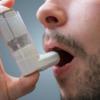How to Avoid Crohn's Flare-Ups

Crohn’s disease patients feel a lot of pain due to inflammation caused by the ailment. When addressing the issue of inflammation, a complete nutritional plan is just as important as the primary treatments administered.
Apart from pain, other Crohn’s disease symptoms, if not kept in check, may lead to more serious problems. For example, rectal or intestinal bleeding may result in anemia, poor nutrition will lead to stunted growth, malnutrition can occur in children, and poor appetite accompanied by severe diarrhea can cause severe weight loss.
Crohn’s disease may enter periods of remission (no symptoms), followed by periods of flare-ups (when symptoms become prominent).
What causes flare-ups?
There is some evidence that shows that several over the counter medications and foods are connected to flare-ups. Nevertheless, what causes flare-ups in one Crohn’s disease patient may not necessarily cause symptoms to surface in another.
To determine the foods that could be causing flare-ups, the affected individuals should try to keep a diary of foods and symptoms; it is very important.
It is advisable to maintain a proper nutrition plan, even when symptoms are under control. It can be altered when pain and symptoms increase in severity and extent.
Proper and frequent hydration is also recommended, especially when the patient is experiencing chronic diarrhea. Eight glasses of fresh water a day are enough. Bottled or purified drinking water is highly recommended. Why? Well, it’s because studies show that chemicals present in tap water, such as chlorine, aggravate Crohn’s disease symptoms.
A Crohn’s disease diet should contain enough dietary fiber when pain and symptoms are absent. But during flare-ups, a low-fiber diet should be adopted. It has been discovered that lactose intolerant persons experience flare-ups when they consume milk and other dairy products. This may also apply to other people who may not necessarily be lactose intolerant.
Research (in London) shows that a certain bacteria present in milk may be the cause of Crohn’s disease. This bacteria exists even after the process of pasteurization. Since the intake of milk is prohibited, but calcium is still required by the body, one should consider other sources, such as fish and seafood. These foods also come with additional benefits, such as omega-3 fatty acids. To maintain good health, some medical experts recommend the intake of salmon at least twice a week.
During flare-ups, when pain and symptoms are severe, it is advisable to eat small meals throughout the day. It is important for a Crohn’s disease nutritional plan to contain a high amount of proteins, and less carbohydrates. This diet helps to relieve pain and discomfort associated with Crohn’s.
Care should be taken when choosing the source of proteins. A lean source is the most suitable, because fats are known to aggravate diarrhea in Chron's patients. To replenish lost nutrients, and possibly allow the bowels to rest, nutritional experts recommend the adoption of an elemental diet or the intake of pre-digested drinks .
Foods that are shown to aggravate symptoms should be avoided like the plague. In fact, they should be completely excluded from the Crohn’s dietary plan. An example is foods that contain an artificial sweetener called sorbitol.
Alcohol and caffeine have no nutritional value; they only increase diarrhea in Chron's patients.
Foods that increase inflammation should also be avoided. They include:
• Carbonated drinks
• Pepper
• Onions
• Lentils
• Dried peas
• Chives
Some over-the-counter medications are also responsible for flare-ups, including anti-inflammatory drugs, like ibuprofen and Motrin. Physicians normally recommend Tylenol when patients are in need of pain relievers. Aspirin is not a viable option for people with Crohn’s disease; it irritates the lining of the gastrointestinal tract thus resulting in ulceration.
















